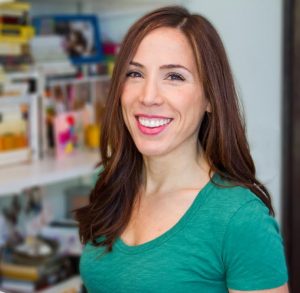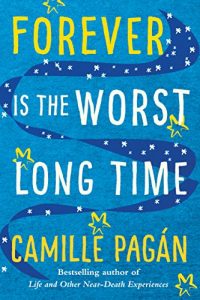Eight Ways To Read More, Even When You’re Deep Into Your Own Manuscript
 Read often and widely: it’s the first commandment of writing. And as any writer committed to her craft knows, there’s no better instructor than the written word itself. Finding time to read, however, is a perpetual challenge when you spend much of your day trying to fill pages with your own thoughts (say nothing of dealing with an ever-full inbox, family demands, and the countless other things that occupy the hours).
Read often and widely: it’s the first commandment of writing. And as any writer committed to her craft knows, there’s no better instructor than the written word itself. Finding time to read, however, is a perpetual challenge when you spend much of your day trying to fill pages with your own thoughts (say nothing of dealing with an ever-full inbox, family demands, and the countless other things that occupy the hours).
With that in mind, I asked some of my favorite authors how they make reading a priority, even when they’re in the middle of drafting. Here’s what they had to say.
Read only what you want. It sounds obvious, but nothing kills desire like duty. Gretchen Rubin used to feel that she never had enough time to read, so she resolved to read more as part of her now-famous happiness project. One of her “aha moments”: Give up reading guilt. “Books make wonderful gifts—both to receive and to give—but I try not to let myself feel pressured to read a book just because someone has given it to me. I always give a gift book a try, but I no longer keep reading if I don’t want to,” says the author of Better Than Before.
Set a goal. In addition to writing novels together, Liz Fenton and Lisa Steinke run a popular blog with the month’s best new releases. How do the duo (whose latest, The Good Widow, comes out June 1st) find time to read all those books? “We believe if you make a goal—and write it down (we share a calendar) it will be met. Our goal is at least 1 book a week each. But we usually end up reading more because Liz is a much faster reader; on average she reads 3 a week. So between the two of us, we read about 4 a week or 200 a year.”
Don’t leave the house unarmed. In the age of the Kindle app, which you can put on your phone, there’s no excuse for having nothing to do when you’re in line at the grocery store or post office. “When I deprive myself of reading for pleasure, my own writing grows stagnant,” says “That’s why I always have a book or my e-reader with me. I read on lunch breaks and when I’m waiting for an appointment,” says Tina Ann Forkner, author of The Real Thing.
Read outside your genre—or gender. “I find that when I’m drafting, I usually read male fiction authors; most recently, I went on a Chris Bohjalian binge,” says Kelly Simmons, author of One More Day. “God knows I always take the woman’s side, so when I read men, there’s no overlap!”
 Read “up”. “While actively writing, I read “up.” Nothing inspires me to write more than literary fiction. A beautiful, meaningful sentence sends my mind into overdrive and I can’t wait to get back to the page,” says Kathryn Craft, author of The Far End of Happy. Sally Koslow, author of The Widow Waltz, does the same. “I reserve about 20 minutes a day to read “reach” books. I try to read only books I consider to be fine writing, in any genre, including my own, hoping they will enrich my own writing.”
Read “up”. “While actively writing, I read “up.” Nothing inspires me to write more than literary fiction. A beautiful, meaningful sentence sends my mind into overdrive and I can’t wait to get back to the page,” says Kathryn Craft, author of The Far End of Happy. Sally Koslow, author of The Widow Waltz, does the same. “I reserve about 20 minutes a day to read “reach” books. I try to read only books I consider to be fine writing, in any genre, including my own, hoping they will enrich my own writing.”
Make it public. There’s no pressure like social media pressure, says Amy Impellizzeri, author of Secrets of Worry Dolls. “I post titles that I’m reading now, or am about to dig into, on social media. That way I’ll be accountable to reader friends (and maybe even the author) who chime in to say “Loved that book—let me know what you think when you’re done!”
Use a book to transition. Yes, reading is a great way to wind down at night. But that’s not the only time to go from chaos to calm, says Lisa Barr, author of the award-winning novel Fugitive Colors. “If I’m knee-deep in manuscript or editing mode, I always allot a half hour right before I pick up my kids from school to read. It’s kind of an aerobic cool-down for me—the segue between Book Crazy and Kid Crazy.”
When you can’t sleep, read. “When I’m writing a book, I can’t sleep through the night. I awaken around 3 or 4 a.m. and can’t turn off my brain to resume sleep,” says Ellen Urbani, author of Landfall. Her solution? Pick up a book—or, in her case, a tablet. “It allows me to sneak in the reading time I can’t fit in during the day between kids and work and writing, and lulls me back to sleep within an hour or so. With lots of wonderful reading material loaded onto my Kindle, I can read in bed without waking my husband or the dogs with lights and the noise of page-turning.”
—
Camille Pagán is the author of Forever is the Worst Long Time ; Life and Other Near-Death Experiences; and The Art of Forgetting.
Visit her at camillepagan.com.
Follow her on Twitter @cnoepagan
Category: Contemporary Women Writers, How To and Tips

























Rebecca, I completely agree! Thanks for weighing in.
Great article Camille, this REALLY resonates. So many authors I know say they can only focus on what they’re working on without getting distracted by other writing. But for me, it’s always been the other way round! I find I am reading more than ever, despite being knee deep in my own book. “When I deprive myself of reading for pleasure, my own writing grows stagnant.” This sums it up beautifully! I think as writers we grow and expand so much through reading good books and if anything, it feels MORE important to be reading excellent literature whilst writing than even those quieter writing times.